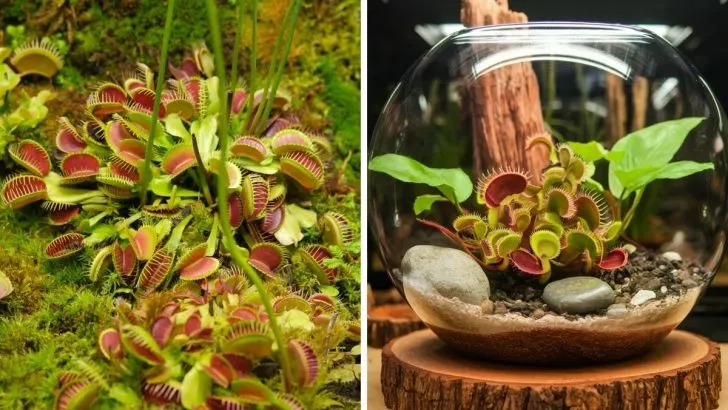Today we will talk about the venus fly trap terrarium. Whether it is good for this plant, how it is used, etc.
If you have this plant and want to change its habitat in your home, and even beautify your home with this new habitat, then stay with us.
Terrariums are specific decor habitats that are suitable for some plants, and today you will learn all about them.
In addition, you will also learn how to take care of the venus fly trap plant. Step by step, and in the end, you will definitely have perfected skills for taking care of this plant.
About Venus Flytrap Plants
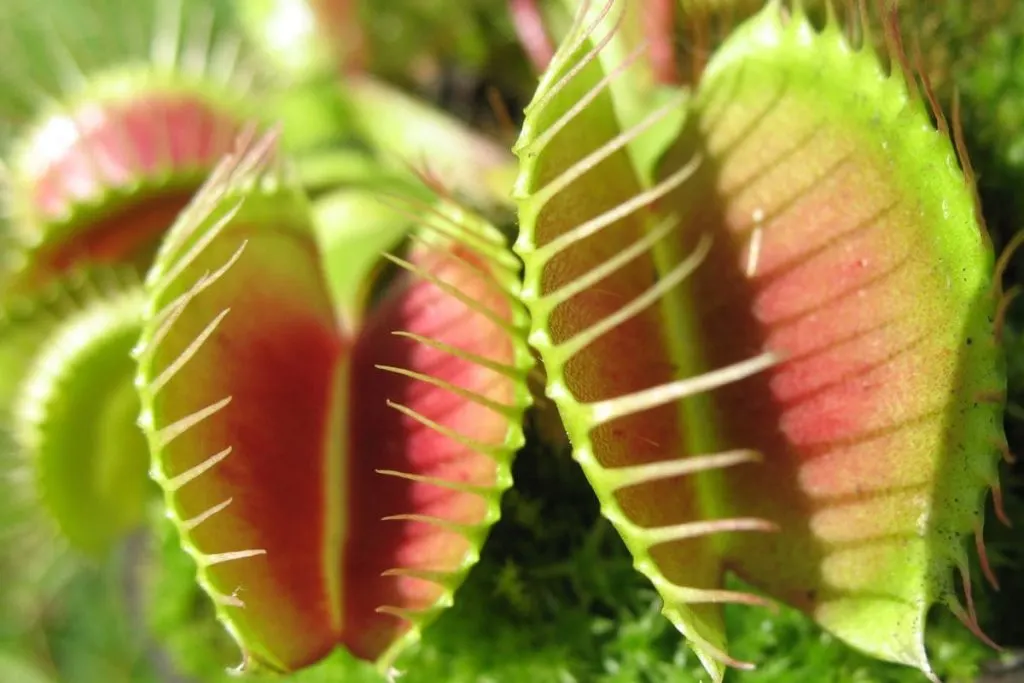
Dionaea muscipula attracts attention because of its specific leaf that closes with lightning speed after a stimulus.
The flowers are white, there are 3 – 10 of them on the flower stem, but the plant only blooms when it is 6 – 7 years old.
The Venus flytrap hibernates dormant, and new leaves grow again in the spring. In summer, the inside of the trap leaf is colored red to attract the attention of insects.
Also, on the edge of the trap, which ends with elongated eyelashes, the flytrap secretes juicy nectar, which, in combination with the color, is simply irresistible to insects. These plants are also great for a minimalist decoration style.
Killer plant company shouldn’t be very wide and you shouldn’t have many other plants close to it, especially not your curious little paw friends.
What Is The Terrarium And How To Use Them For Plants?
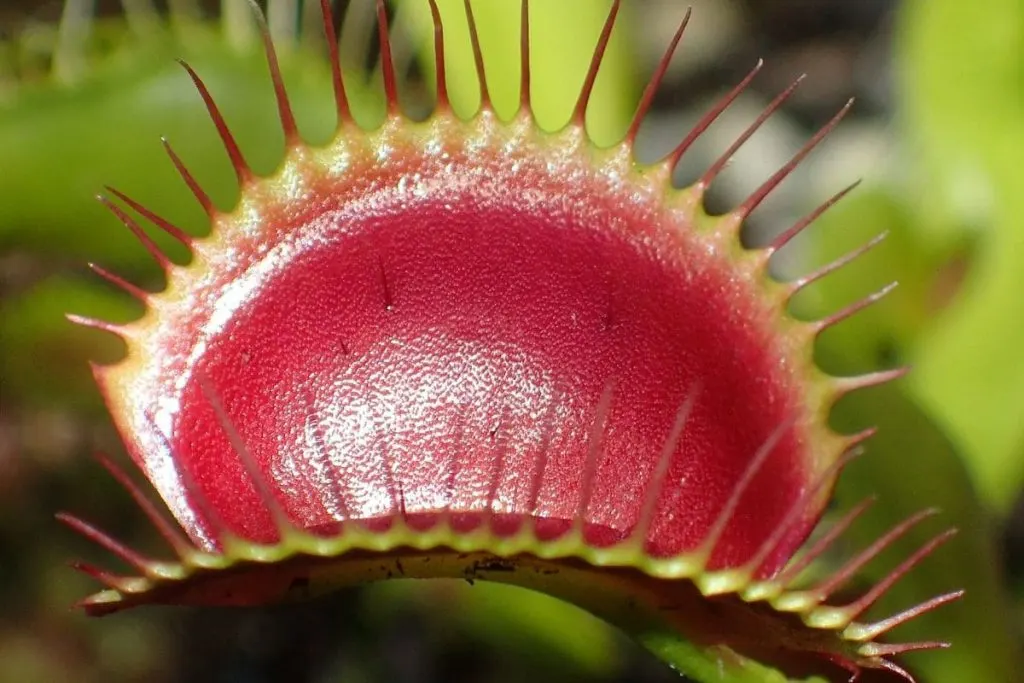
A terrarium is a miniature garden in small, usually sealable containers such as bottles and cans. It comes from the Latin terra + arium. Instead of fish and water, like in an aquarium, there are only plants and earth.
Pretty details aside, terrariums are beautiful and a great idea to keep plants indoors. Whether you’re looking for an office companion, a modern way to decorate your home, or a fun project to do with your kids, a terrarium is a great choice.
Can Carnivorous Plants Live In A Terrarium?
Terrariums are a great way to grow many carnivorous plants. They keep the humidity high, keep the temperature constant, provide enough light (usually full sun) to keep the plants happy, and provide portholes to monitor the plants’ progress.
Plus, with all these benefits, they are a great, almost perfect decoration. If you make drainage holes, they’ll have an amazing airflow as well.
Are Terrariums Good For Venus Fly Trap Plants?
Yes, you can grow flies in your terrarium. Beware of excessive humidity in indoor terrariums as mold can develop.
An indoor terrarium like the venus fly trap with extra humidity would be great. Provide the airflow in your terrarium as well.
What Is The Best Terrarium For A Venus Flytraps?
Glass bowls are a good choice for your Venus Flytrap terrarium. Glass containers are better because it’s easier to clean.
Care Guide For Venus Flytraps Plants
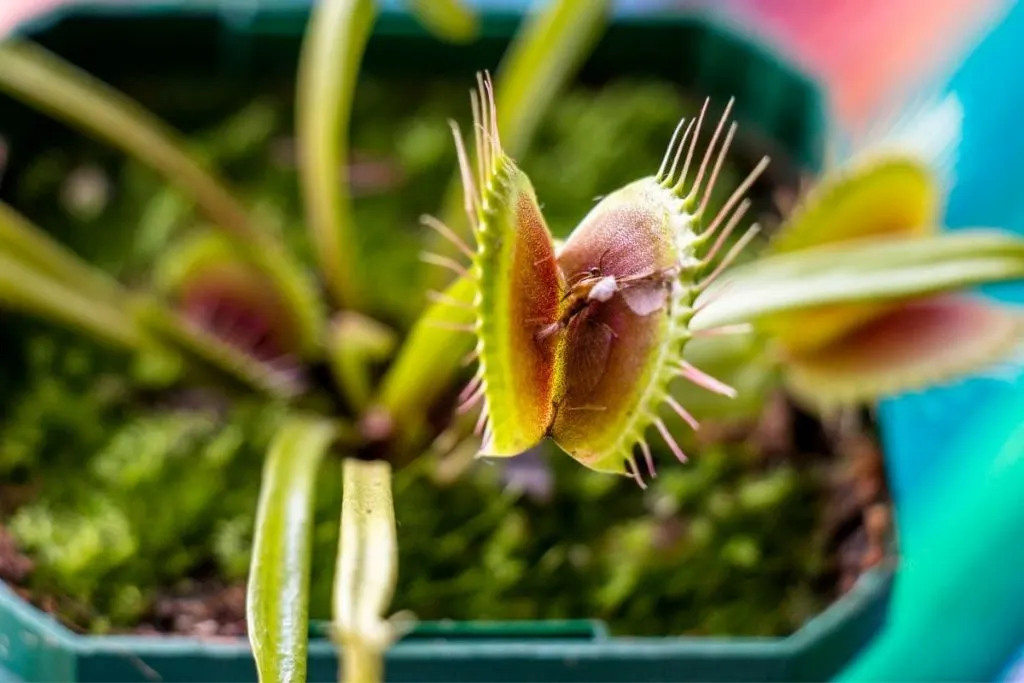
Most carnivorous plants are low-maintenance plants. Once you read it, you’ll learn that carnivorous plant care is very simple and that you have nothing to worry about.
Now, all you have to do is to buy a venus fly trap terrarium and read this article. After you’re done, you’ll be more than ready to professionally take care of it. Let’s go!
Grow Venus Fly Traps In These Light Conditions
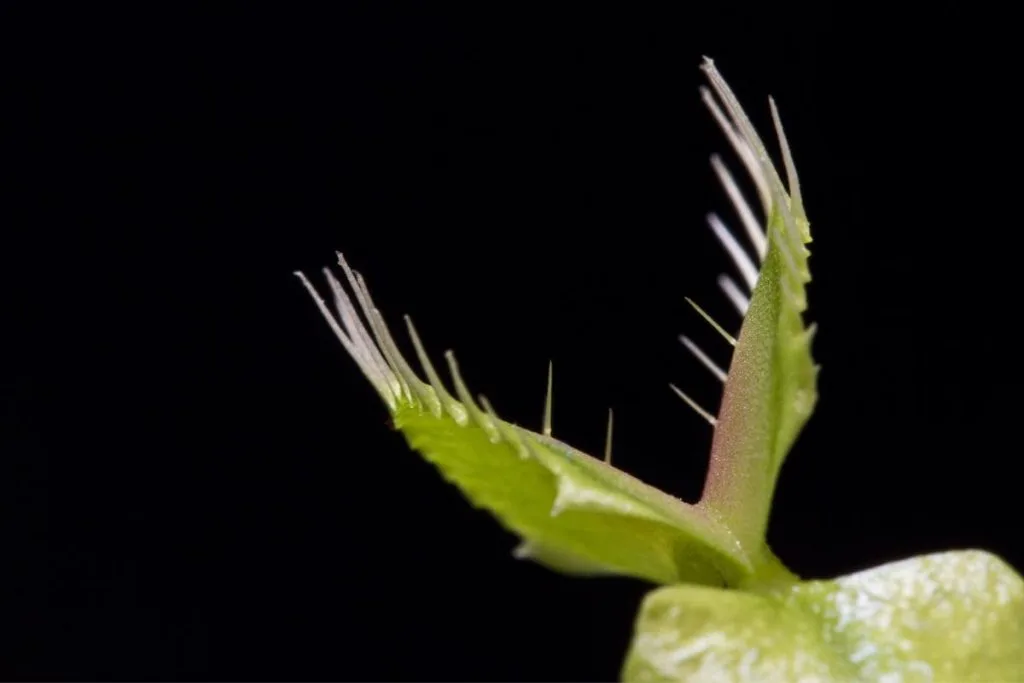
Dionaea needs a lot of direct sun and plenty of water and grows in acidic substrates. The dormant period begins in the fall, and the plants bloom in the spring. In houses, you can place it on the south windows.
A bit of shade is good occasionally as well, but it won’t be much needed since this plant is literally craving direct sunlight.
Watering Schedule For Venus Fly Trap Terrarium
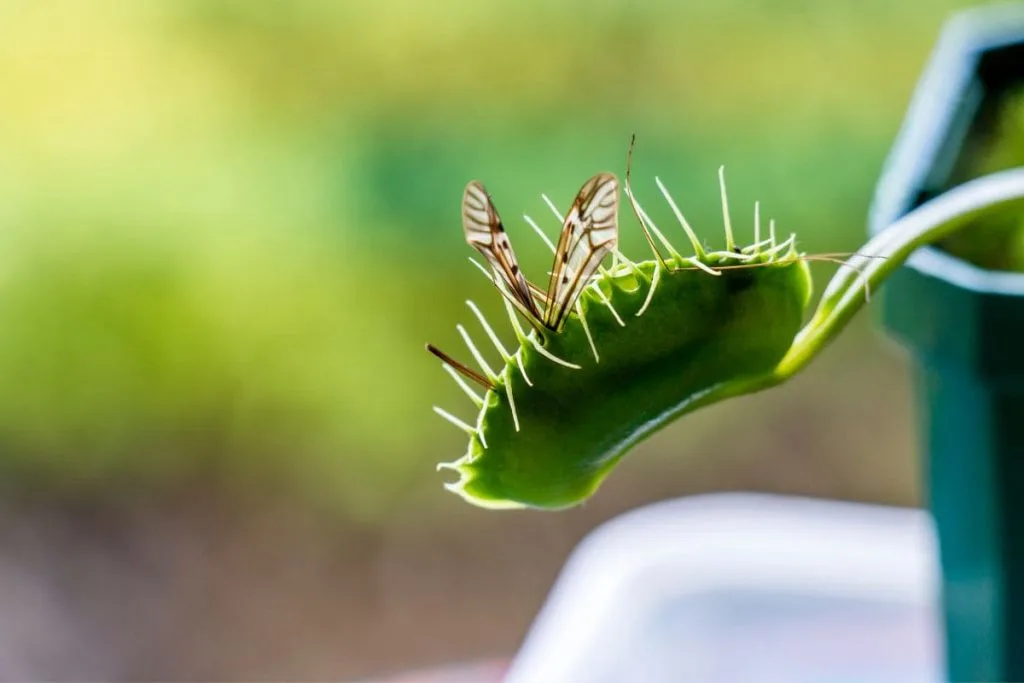
During the winter, it does not need a lot of light but makes sure that there is always water in the substrate.
In summer, spray it several times a day with distilled water. Do not let the carnivorous plant bloom because it will wither afterward. Tap water isn’t very much recommended for this plant.
Venus flytrap is propagated by seeds planted in peat that is regularly sprayed and moistened or by leaf cuttings, which is best done in June.
During the summer, water it every three days by submersion, while in the winter, reduce watering to once a week.
It is extremely important that watering is carried out with soft water, avoiding drinking water that has too much calcium(as for most plants), and that the temperature of the watering water is room temperature, so it must not be cold.
During the dormant period, almost stop watering, while during growth, water more abundantly, especially in sunny and warm weather.
The water you use for watering can be filtered, you can also use water from the air conditioner, or spring water, but the simplest is to use rainwater or reverse osmosis water.
Venus Flytrap Soil Type
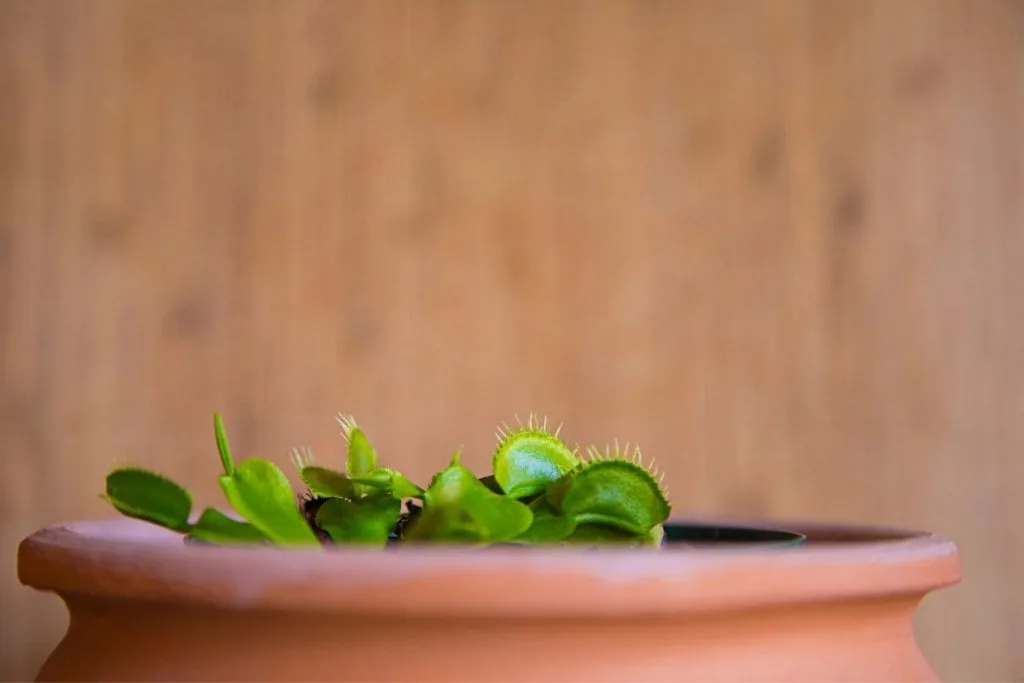
Its habitat is poor in nutrients due to the water that washes the soil. Compost in nature also has the characteristic of being very acidic.
At the end of the ninth month, Dionaea slows down its growth and prepares for the autumn period and winter. A rest period is necessary for the plant to be happy. Peat moss isn’t a bad potting soil for this plant as well.
When it comes to their pot, a glass container is the best option for these plants. Minimalist style design makes it even better!
They just love it so much. Of course, you still need to make drainage holes. Plants absorb much water and they need those drainage holes badly!
Feeding Venus Fly Trap Plants
During the summer, if the plant lives outside the house, there is no need to catch insects instead of the plant. In a closed space, you must trap insects once a month so that the plant gets enough minerals to survive.
You can use flies, moths, and mosquitoes, but don’t use too big insects because the trap could turn black. Each trap can digest a maximum of 4 insects before it withers.
Temperature And Humidity For Venus Flytrap Terrarium
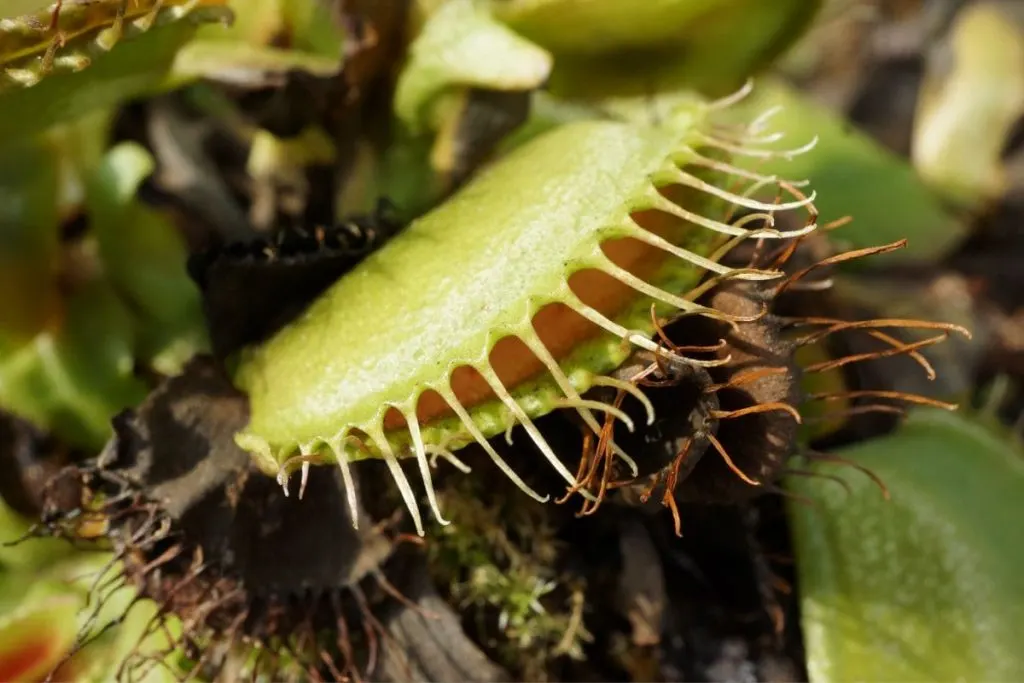
The Venus flytrap thrives best with summer temperatures of 55 F and winter temperatures of 35 F.
The Venus flytrap needs at least 5 months of cold winter weather to survive. If you do not provide it with low temperatures, it could wither.
When it comes to humidity levels, this plant should be in the medium humidity area, 50% is the perfect humidity percentage for this plant. High humidity isn’t recommendable.
Propagation Of Venus Fly Traps By Cutting Leaves
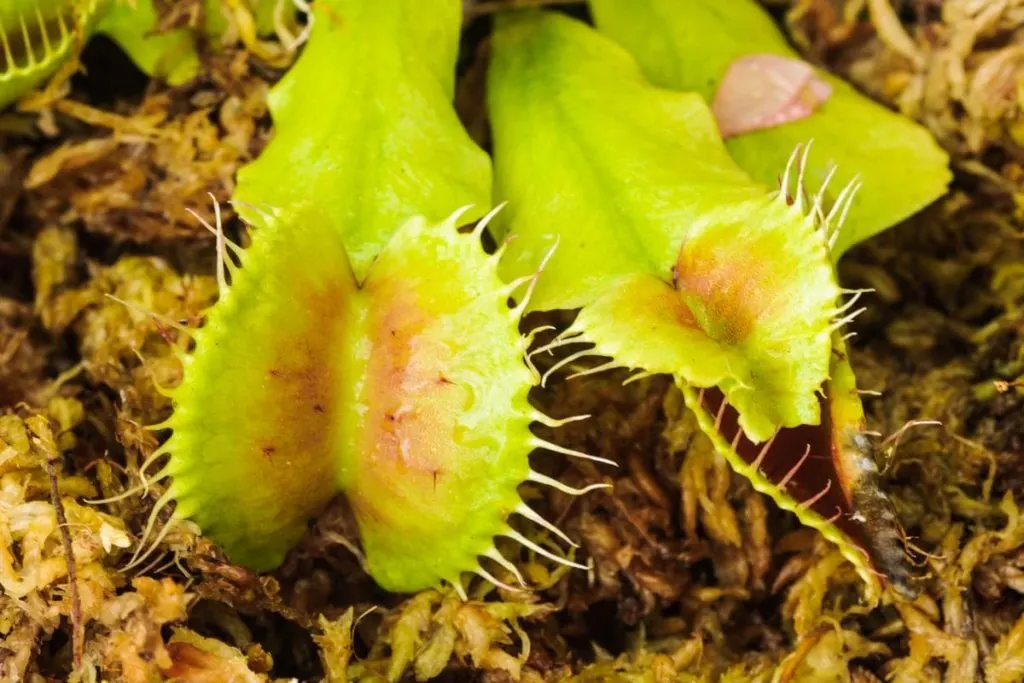
The leaf is cut from the Venus flytrap, the cut is treated with Kornevin, plant the cutting at an angle in a substrate consisting of quartz sand and peat. Cover it with a transparent cap, and keep it under strong diffused light until a shoot appears at the bottom of the cutting.
This usually happens after three months. Keep in mind that when the Venus flytrap takes root, there are frequent cases of fungal infection of the cuttings.
Propagation Of Venus Flytrap By Dividing The Bush
It is much easier to propagate Venus flytrap by dividing the bush. It is better to do this when transplanting the plant: at the age of 1-2 years, remove the venus plant from the pot.
Then, freed the roots from the substrate, and separate the daughter cocoons from the adult plant with a sterile tool. After this, place the cuttings in separate pots and keep them in partial shade until they take root in new soil.
Repoting Carnivorous Plant Terrarium
Venus flytrap is transplanted at home every 2-3 years, and it is better to do it in the spring. The container for Dione needs to be narrow but deep, as its roots sometimes reach 9 inches in length. Be careful when transplanting, because the plant’s root system is fragile.
Take the flower out of the container, free its root system from the old substrate, and if it does not come off well, soak the roots in water for a few minutes. Then rinse the dionaea leaves with a sprayer.
Cultivation Of Venus Flytrap From Seed
To get Dionea seeds, you have to pollinate its flowers by hand with a brush or cotton wool. A month after successful pollination, small seeds will form.
How to grow a Venus flytrap from seed? Since the seeds of the plant quickly lose their germination, it is necessary to sow them three months after pollination of the flowers in warm soil, which consists of 70% sphagnum and 30% quartz sand.
If the seeds have been stored longer, they should be stratified before sowing – they should be kept in the refrigerator for a month and a half, wrapped in sphagnum, and sealed in a ziplock bag.
Venus Fly Trap Terrarium In Winter
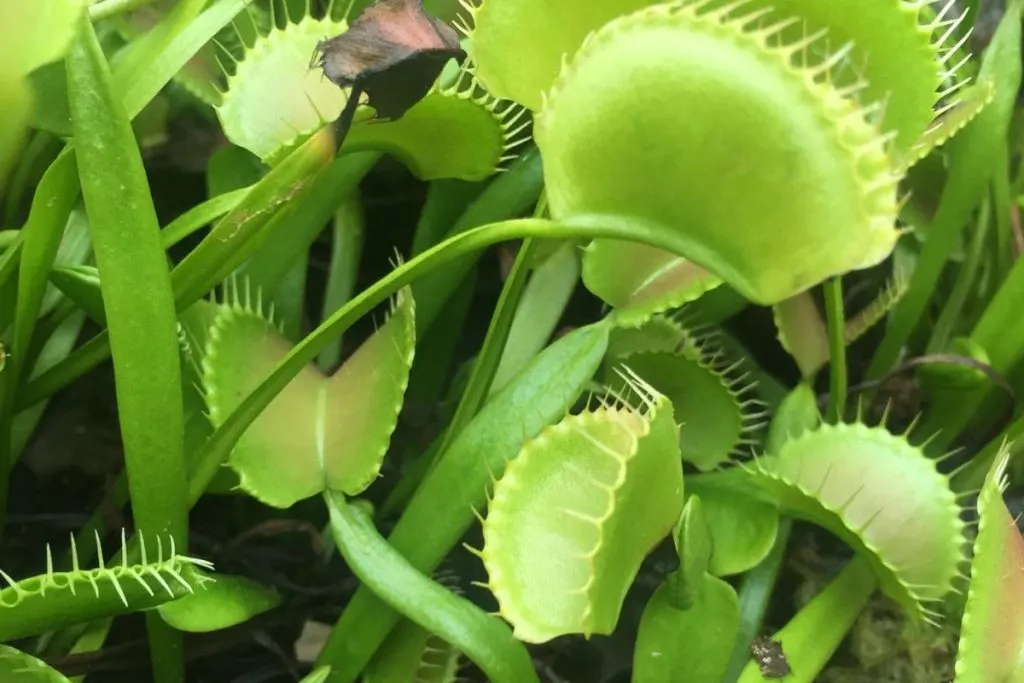
In autumn, the growth of new leaves stops and the plant begins to prepare for winter sleep. To help the Venus flytrap enter its dormant period, you need to reduce watering and not leave more water in the pan.
The Venus flytrap should overwinter in a cool semi-shade, where the temperature will remain within 35 F. You can put the flower on the glazed balcony or even put it in the bottom drawer of the refrigerator.
Pests And Diseases Of These Tropical Pitcher Plants – Venus Fly Trap Terrarium
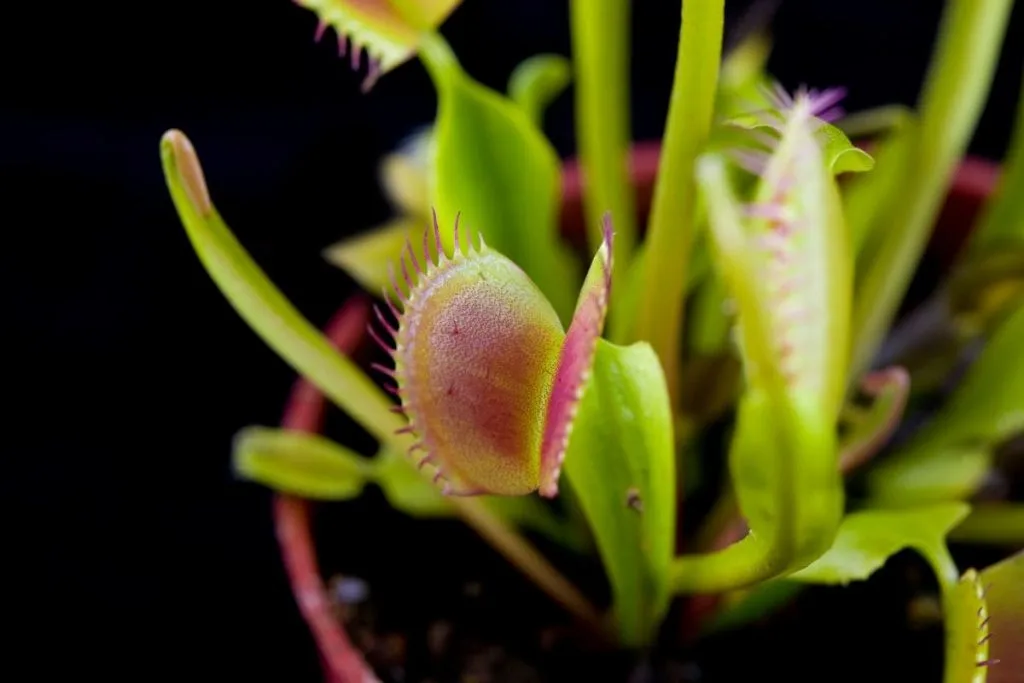
Strangely enough, a predator that feeds on insects sometimes suffers from them. There were cases when aphids were introduced into the traps of the Venus flytrap, which led to their deformation. In aerosols, there are special insecticides against aphids.
- In conditions of insufficient air humidity, spider mites can settle on the plant, which is destroyed by double or triple treatment with an acaricide solution at intervals of one week.
- In wet soil and in conditions of too high air humidity, a black coating from the sooty fungus appears on the plant. Fungicides are used to combat it.
- Botrytis, or gray rot, also infects the Venus flytrap in the wrong conditions, covering it with a gray moldy down. It is necessary to immediately remove the affected parts, and then subject the plant to treatment with a fungicide solution.
- The most dangerous of all is the bactericidal lesion of the Venus flytrap, which can occur due to the fact that the plant is unable to digest the caught insect. In such cases, the trap with the victim begins to rot, turn black, and the disease quickly spreads to neighboring organs. It is necessary to immediately remove the damaged trap and treat the Venus flytrap with a fungicide solution.
Venus Fly Trap Terrarium – Why Not Know This Too?
Oh no, we’re not done yet. We left, maybe the most interesting part in this section, just before the end. Learn all about the other carnivorous plants and types of venus plants.
Along with that, I’m sure you’re wondering how the venus fly trap catches its prey. Why not know the history of this plant as well? Well, we have the answers!
Other Carnivorous Plants – Types Of Venus Fly Trap Plants
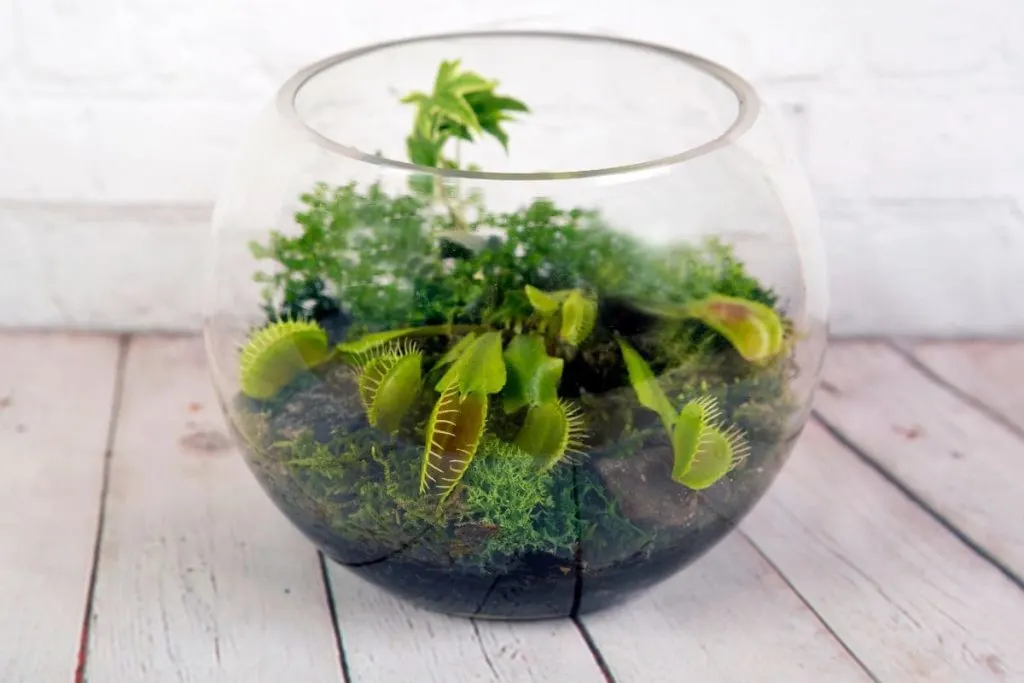
The genus Dionea is monotypic, that is, it is represented by one species – the Venus flytrap. But there are many varieties of Venus fly traps:
- Dante Trap is a plant with a diameter of 5 inches with traps in the amount of 5 to 12 pieces. The color of the flower is green with a red stripe on the outside of the traps, and the inner cavity of the traps is red. Both leaves and traps are almost vertical.
- Div is a plant with a rosette of green leaves that quickly creates traps larger than 5 cm that turn bright crimson in good light.
- Akai Riu is a variety with traps and deep red leaves that keeps this shade in both bright light and partial shade. There is a green stripe on the outside of the traps.
- Ragyula is a plant with green leaves and alternating purple and red traps.
- Bohemian garnet is a dense green plant with a diameter of up to 12 cm with a number of traps from 5 to 12 pieces. Wide leaves cover the entire substrate, traps are also horizontal.
- Mosquito trap is a green plant when young, but over time its traps turn red, although the stems remain green. Two different types of traps grow on one flower of this variety.
- Crocodiles are young plants that have a green color with a pink interior cavity of the traps, but over time the traps turn red. The leaves of the plant are arranged horizontally.
- Newton – this green Venus flytrap has an unusual trap shape: they are elongated and cut on one side only, and their teeth sometimes become blind.
- Dracula is a green Venus Flytrap with a red inner cavity of traps. The teeth on the traps are short, with a basic red stripe on the outside.
How Do Venus Flytrap Plants Catch Their Prey?
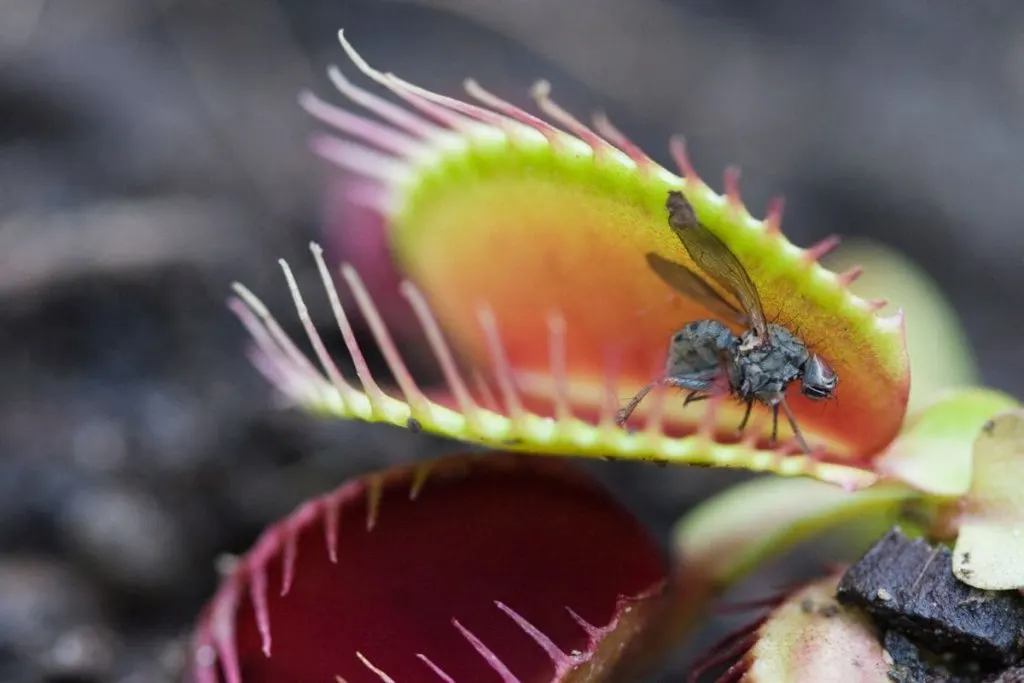
When the insect lands on the trap, it will not close immediately, but it is necessary for the insect to stimulate a pair of sensitive hairs in the middle of the trap while walking.
Only then does the trap close quickly and catch the insect. If the insect still manages to escape, the trap will only open in about 2 hours. When and if the insect is caught, the plant starts to secrete enzymes that break down the proteins of the animal.
History Of Venus Fly Trap
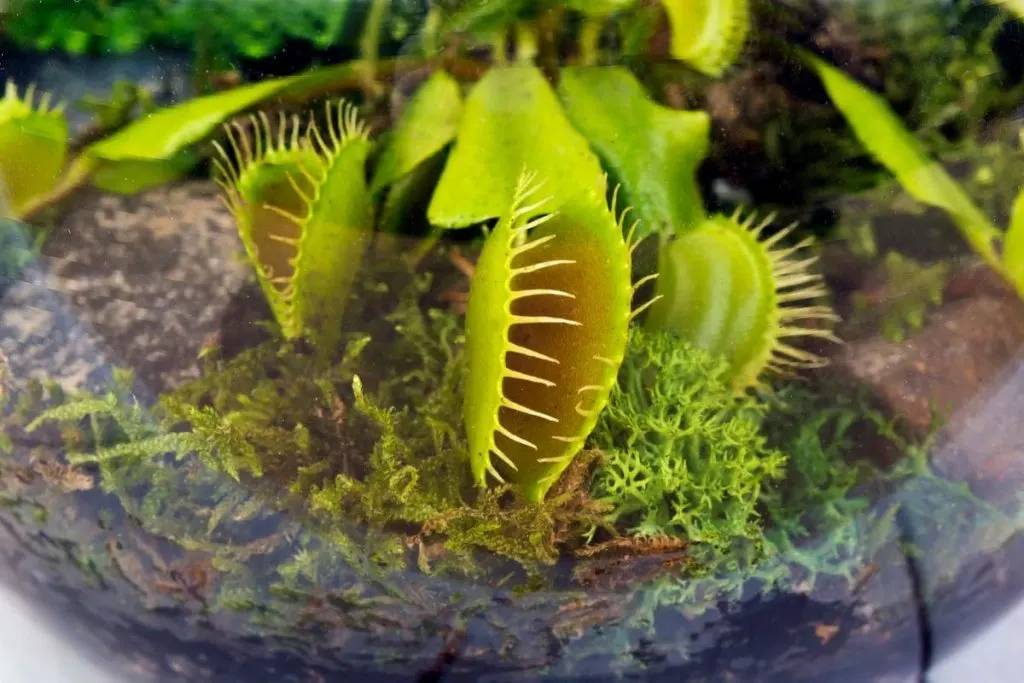
Back in 1875, Charles Darwin’s well-known work “Insectivorous plants” provided the final proof that some plants have the ability to capture and digest small animals. We are used to seeing plants as passive and peaceful creatures, completely opposite to predators from the animal world.
Although over a hundred years have passed since the discovery of such plants, anyone who witnesses the capture of the prey of these beautiful plants is undoubtedly left breathless.
Venus flytrap (Dionaea muscipula) is the most famous carnivorous plant in the world. It was discovered at the turn of the 18th/19th century. st. in Carolina, in the USA. It grows in swampy areas, where there is a lot of direct sunlight due to the lack of tall vegetation and the constant presence of water.
Final Thought On The Venus Fly Trap Terrarium
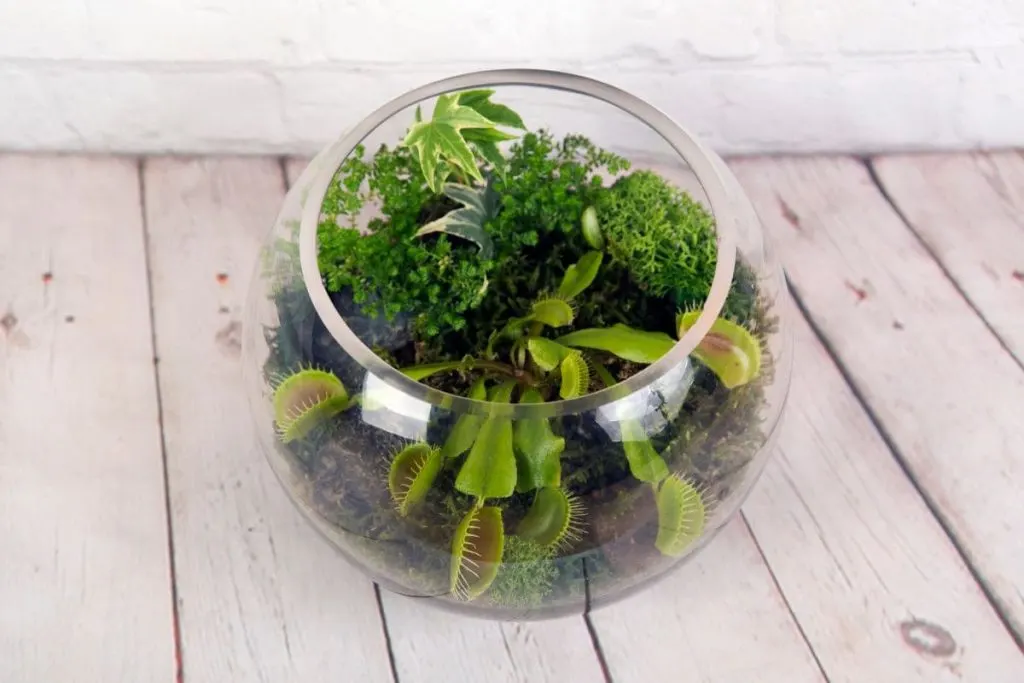
We have come to the end of another article about plants. I hope that you have learned a lot about the venus fly trap terrarium and that you have acquired the necessary knowledge to care for this plant.
You must be saying to yourself that it is very easy, and you are right, it is, it is very easy. With a little reading and your previous skills, you will master the care of this plant from the first time.
Have you figured out where to put your venus fly trap plant terrarium yet? Great if it is! Buy it now and that’s it!
See you soon!

